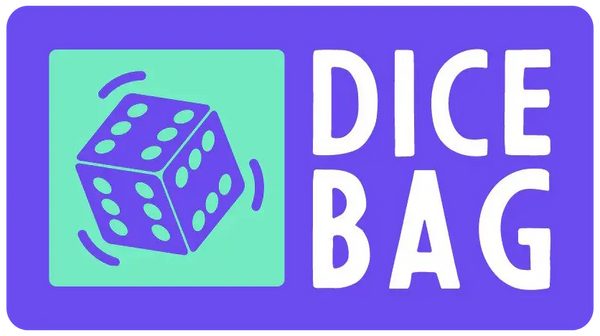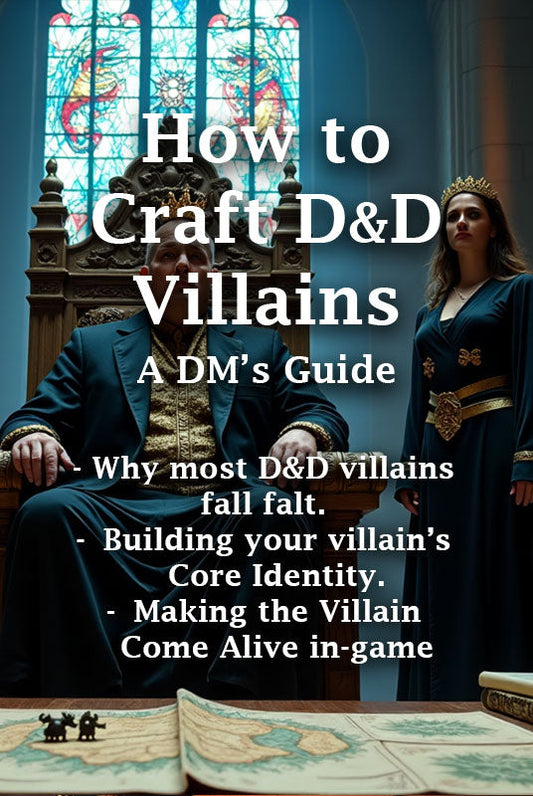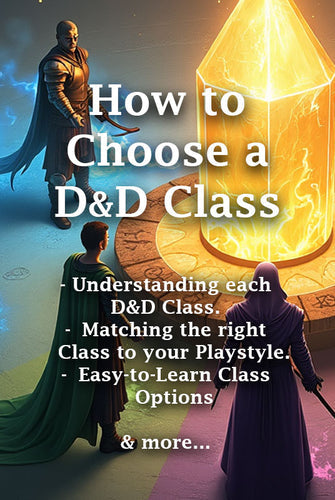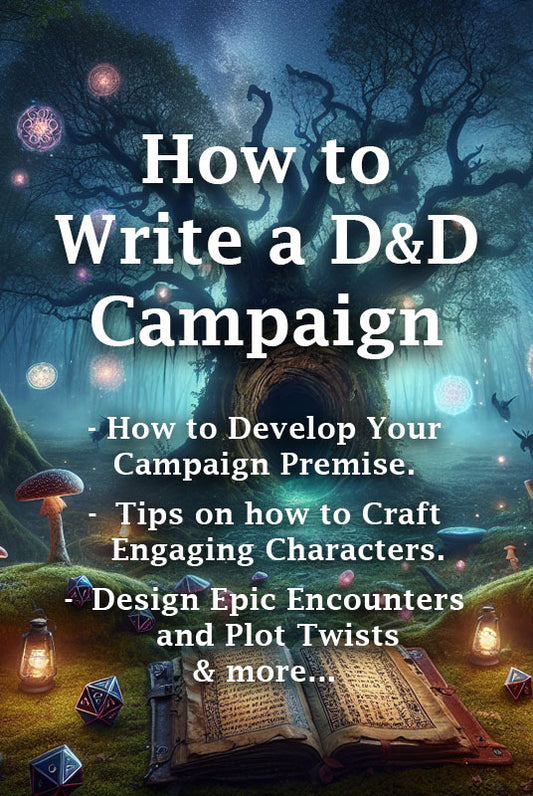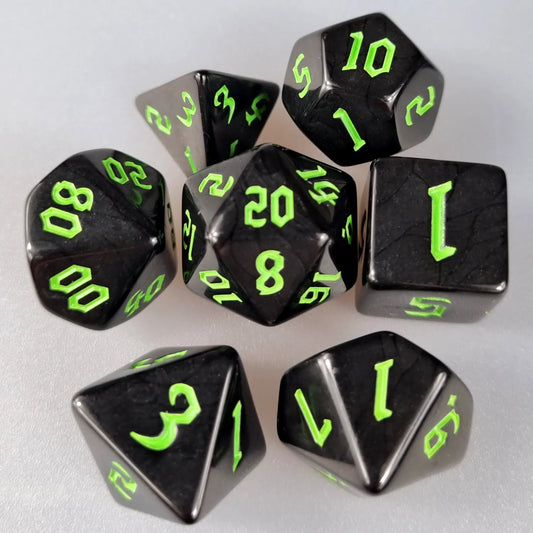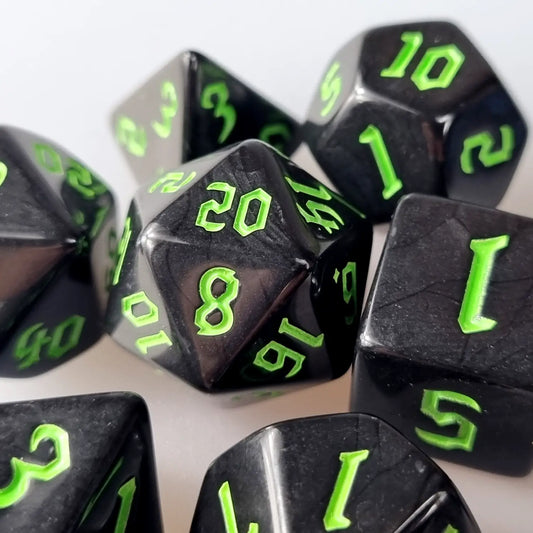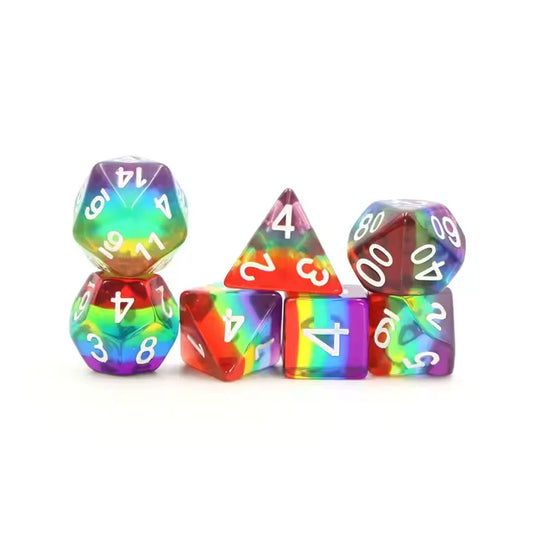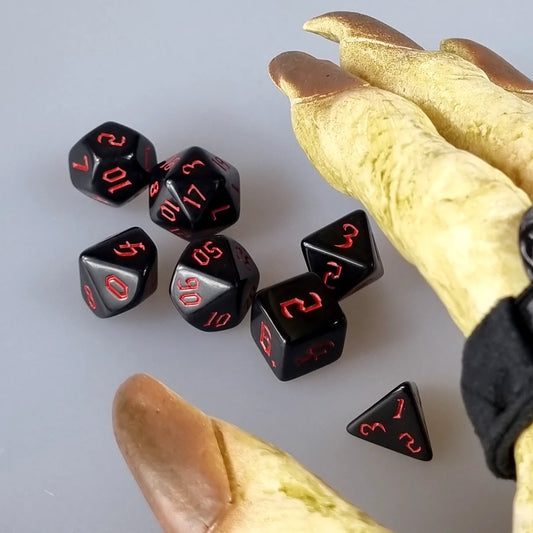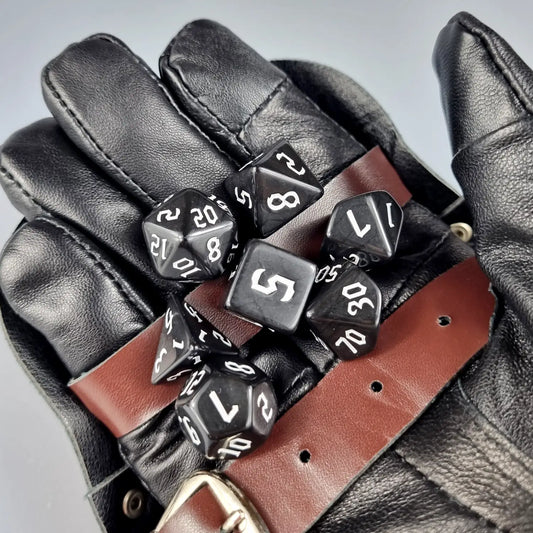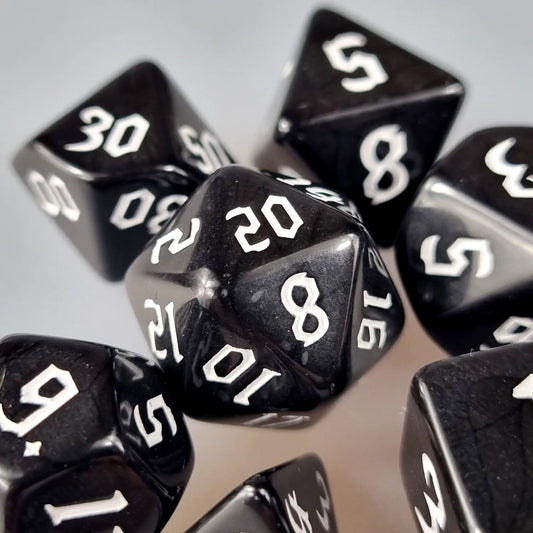
Embarking on the adventure of Dungeons & Dragons (DnD or D&D) can seem daunting for newcomers, yet it promises an unparalleled journey into imagination and camaraderie. Understanding how to play DnD is not just about learning a game; it's embracing a world where characters, dice, and storytelling merge to create unforgettable experiences. This guide is designed to break down the barriers, explaining the rules, how character creation works, and how to start DnD, ensuring you're well-prepared to dive into this beloved role-playing game. Whether you're curious about how long a Dungeons & Dragons campaign lasts, navigating through character sheets, or selecting from the diverse character races, your initiation into DnD is about to unfold.
This article will guide you through the essential steps from understanding the basic terminology to setting up your first game and creating your very first character. You'll learn the mechanics of playing the game, with detailed insights into the player's handbook, character creation, and how to leverage pre-made adventures for a smoother start. Tips for beginners will help streamline your learning path, while delving into how DnD works, ensuring a solid foundation for launching your adventures with confidence. As you step into the realms of imagination, this beginner’s guide will be your map and compass, pointing toward countless hours of collaboration, creativity, and enjoyment.
What is Dungeons & Dragons?
Dungeons & Dragons, often abbreviated as D&D, is not just a game but a doorway to expansive storytelling and immersive role-playing experiences. Originally published in 1974 by Gary Gygax and Dave Arneson, D&D has evolved from simple beginnings into a complex and richly detailed game that encourages creativity, collaboration, and problem-solving.
The Evolution of Dungeons & Dragons
The game started with a first edition that was mailed in a faux wood-colored cardboard box, containing three adventure booklets: Men & Magic, Monsters & Treasure, and Underworld & Wilderness Adventures. Over the decades, Dungeons & Dragons has undergone several revisions, with the 5th edition, released 40 years later, marking a significant resurgence in its popularity. This edition simplified many rules and made the game more accessible, contributing to a role-playing renaissance.
Gameplay and Objectives
At its core, D&D is about storytelling. You and your fellow players create characters that embark on imaginary adventures within a fantasy setting. A Dungeon Master (DM) guides the game, controlling the environment and narrating the outcomes of your actions. Each player creates a character from a variety of classes and races, each with unique abilities. Choices include being a mighty fighter, a cunning rogue, or a wise wizard, among others. This character represents the player in the game, undertaking adventures and interacting with the game world and other characters. Your character grows in power and ability through experiences, which are often framed around quests for treasure, battles with foes, and rescues of the imperilled.
The Cultural Impact of D&D
Dungeons & Dragons has significantly influenced modern culture and media. It has inspired not only games but also books, movies, and television series. Shows like Stranger Things have introduced D&D to new audiences, showcasing its impact on storytelling and group dynamics. Moreover, the game has been featured in various forms of media, reinforcing its role as a foundational element in fantasy and adventure genres.
Dungeons & Dragons offers a unique blend of storytelling and strategic gameplay that makes it a beloved pastime for many. Whether you are battling dragons or uncovering ancient secrets, D&D provides a platform for creativity and friendship, where the only limit is your imagination.
Dice and Their Uses
Dice are a core component of gameplay in Dungeons & Dragons, used to determine the outcomes of your actions, from swinging a sword to casting a spell.
-
Types of Dice: The game utilises various polyhedral dice, each serving a specific purpose:
d20: Used for most checks, attack rolls, and saving throws.
d6, d8, d10, d12: These dice are used for damage rolls and specific checks.
Percentile Dice (d10 with double digit numbers): Used for determining percentages and outcomes in more complex situations.
- Using Dice: When you perform an action, you'll roll a d20 and add any relevant modifiers based on your character's abilities and circumstances. The result determines success or failure against a target number set by the Dungeon Master.
Setting Up Your First Game
Gathering Supplies
To embark on your Dungeons & Dragons adventure, you'll need a few essential supplies. Start by gathering the following items:
- Basic Rules: Obtain the Basic Rules for Dungeons & Dragons available for free on the Wizards of the Coast website. This document contains everything you need to understand the game's mechanics.
- Player's Handbook: For a more comprehensive set of rules and character options, the Player's Handbook is invaluable. It includes details on subclasses, spells, and more.
- Dice: A set of polyhedral dice is crucial. These include a d20, d6, d8, d10, and d12, used for everything from making attacks to skill checks.
- Character Sheets: Players will need these to track their characters' stats, items, and abilities. You can find printable versions online or use digital tools like D&D Beyond's character builder.
- Writing Materials: Have plenty of pencils and paper on hand for notes and mapping out adventures.
Consider additional resources such as the Dungeon Master’s Guide and the Monster Manual for expanded gameplay options and challenges.
Finding or Forming a Group
The first step in your D&D journey is assembling your adventuring party (we've got a full article on this here). Start with friends and acquaintances who might be interested in playing. If you're short on players, extend your search to friends of friends or utilise online platforms. Here are some strategies to gather a group:
- Personal Network: Reach out to people in your circle who show interest in fantasy or gaming.
- Online Platforms: Use forums like Reddit’s r/DnD or dedicated apps like Meetup to find local or virtual players.
- Gaming Stores and Libraries: Check local game stores and libraries for groups looking for players, or post your own notices.
Once you have a group, ensure everyone is committed and understands the game's basic premise and expectations.
Choosing a Dungeon Master
If you're organising the game, you might take on the role of the Dungeon Master (DM). This role requires a good grasp of the rules and a readiness to guide the narrative. Here’s how to prepare:
- Understand the Rules: Familiarise yourself with the core mechanics, as outlined in the Player's Handbook and the Basic Rules.
- Plan the First Adventure: Start with a simple campaign or a one-shot adventure to allow both you and your players to learn the game without overwhelming commitment. Consider using pre-made adventures like Lost Mines of Phandelver.
- Session Zero: Conduct a session zero to discuss game expectations, character creation, and group dynamics. This is also a great time to integrate players' character backstories into the campaign.
As the DM, your role is to facilitate enjoyable gameplay, make fair rulings, and ensure that all players feel included in the adventure.
Creating Your First Character
Creating your first character in Dungeons & Dragons is a thrilling step into a world of adventure. This process involves choosing a race and class for your character, as well as filling out a character sheet that outlines all their abilities and backstory. Let's dive into each of these steps to help you create a character that's both fun to play and integral to your adventures in D&D.
Choosing a Race
Your character's race is more than just their appearance—it's a key part of their identity in the game. Each race comes with its own set of unique traits, abilities, and lore. Here's a brief overview of some races you might choose:
- Dragonborn: Descendants of dragons, known for their strength and a breath weapon tied to their draconic lineage.
- Dwarf: Skilled miners with a deep love for their clans, excellent for martial classes but also common as spellcasters.
- Elf: Long-lived and ethereally beautiful, elves excel in both martial and magical pursuits.
- Gnome: Inventive and joyful, gnomes possess a keen intellect and a knack for spellcasting.
- Half-Elf: Often caught between two worlds, half-elves can blend into human and elvish societies with ease.
- Halfling: Inspired by The Hobbit, halflings are home-loving folk with a knack for adventure.
- Half-Orc: Bearing the legacy of both humans and orcs, half-orcs are strong and resilient, often facing societal challenges.
- Human: The most versatile and populous race, humans are often the driving force behind the world's events.
- Tiefling: Bearing the blood of devils, tieflings have unique magical abilities and a resistance to fire.
There are more races than are listed here. Depending on which version of the game you are playing will determine which races are available.
Selecting a Class
Your character's class determines their abilities, skills, and role in the adventuring party. Here are some classes you might consider:
- Barbarian: A fierce warrior with a primal rage that makes them formidable in combat.
- Bard: A versatile class, bards use their musical talents to cast spells, inspire allies, and manipulate foes.
- Cleric: Divine spellcasters who wield the power of their gods, clerics can heal allies and smite enemies.
- Fighter: Masters of combat, fighters are skilled with a variety of weapons and armor.
- Rogue: Stealthy and dexterous, rogues excel in sneaking, thievery, and striking from the shadows.
- Wizard: Powerful spellcasters with a wide array of spells at their disposal, wizards seek knowledge and arcane power.
There are more classes than listed here, depending on which version you are playing will determine which classes are available.
Moral Alignment
Alignment is a way to define your character’s ethical and moral perspective, which influences how they interact with the world and other characters.
- Alignment Grid: Characters can be Lawful, Neutral, or Chaotic, and Good, Neutral, or Evil. These axes combine to form nine possible alignments, such as Lawful Good or Chaotic Evil, each providing a unique moral framework for your character.
- Roleplaying Implications: Your alignment can guide decision-making and interactions within the game. For example, a Lawful Good character acts with compassion and order, while a Chaotic Evil character may be self-serving and destructive.
Understanding these basic terminologies helps you navigate the complexities of Dungeons & Dragons, enhancing your gameplay experience and immersion in the fantasy world.
Filling Out a Character Sheet
The character sheet is where you'll record everything about your character, from their abilities and equipment to their backstory and personality traits. Here's a quick guide to filling one out:
- Character Basics: Start with your character's name, race, class, and background. These elements form the core of your character's identity.
- Ability Scores: Strength, Dexterity, Constitution, Intelligence, Wisdom, and Charisma determine your character's capabilities. You can generate these scores through various methods, such as rolling dice or using a standard array.
- Skills and Proficiencies: Based on your class and background, select skills and proficiencies that your character excels in.
- Equipment: Your class and background determine your starting equipment. Choose items that complement your character's role in the party.
- Spells: If your class can cast spells, select a number of spells from your class's spell list to start with.
- Personality Traits: Define your character's personality, ideals, bonds, and flaws. These traits help bring your character to life and guide their actions and decisions during the game.
Creating your first D&D character is an exciting process that sets the stage for countless adventures. Take your time, explore the options, and most importantly, have fun bringing your character to life!
Playing the Game
Following the Rules
When you start playing Dungeons & Dragons, understanding and following the game's rules is crucial. The Dungeon Master (DM) serves as the referee and guide, interpreting the rules and setting the scene for the players. Here's how you can effectively follow the rules:
- Learn the Basic Mechanics: Familiarise yourself with the core mechanics, such as rolling dice to determine the outcomes of character actions like attacks, checks, and saving throws.
- Reference the Player’s Handbook: Keep the Player's Handbook handy during sessions for quick rule checks and clarifications on character abilities and spell details.
- Rely on the DM: The DM will make rulings during the game, ensuring that the gameplay is fair and enjoyable for everyone. Trust their judgment and be open to learning from their decisions.
Roleplaying and Combat
Dungeons & Dragons combines immersive roleplaying with exciting combat scenarios. Here’s how you can excel in both aspects:
- Engage in Character Roleplaying: Embody your character fully, making decisions and interacting with the game world as they would. Use your character's backstory and personality traits to guide your actions and interactions.
- Participate in Combat Strategically: Understand your character's combat abilities and think strategically about positioning, target selection, and the use of special skills or items.
- Collaborate with Teammates: Communicate with your fellow players to coordinate actions and strategies. Supporting each other in combat can lead to more effective encounters and memorable gameplay moments.
Using Imagination and Strategy
The essence of D&D lies in its open-ended nature, where your imagination and strategic thinking shape the adventure. Here’s how you can leverage these elements:
- Think Creatively: Approach challenges with creativity. Whether you're solving puzzles, negotiating with NPCs, or battling monsters, think beyond conventional solutions.
- Adapt to Situations: Be prepared to adapt your strategy based on the scenario. The dynamic nature of D&D means that plans can change quickly, requiring quick thinking and flexibility.
- Use the Environment: Utilise the game setting to your advantage. Interact with the environment during combat and exploration for strategic benefits or to create interesting roleplaying opportunities.
By integrating these practices into your gameplay, you'll enhance your experience and enjoy everything that Dungeons & Dragons has to offer. Whether you're navigating complex dungeons or engaging in high-stakes negotiations, each session is an opportunity to develop your character and create stories that you and your fellow players will remember.
Tips for Beginners
Start with the 5th Edition
If you're new to Dungeons & Dragons, beginning with the 5th Edition is highly recommended. This edition simplifies many of the game's rules, making it more accessible to new players. The streamlined mechanics focus on enhancing the role-playing experience, ensuring that you can quickly grasp the basics and start enjoying the game. Consider purchasing the Player's Handbook, which provides comprehensive information on character creation, rules, and the magic system.
Using Pre-Made Campaigns
For your first few sessions, using pre-made campaigns can be a great way to ease into the game without the pressure of creating a story from scratch. The Dungeons & Dragons Starter Set: Dragons of Stormwreck Isle is an excellent choice for beginners. It includes everything you need: a rulebook, a set of dice, five pre-made characters, and an engaging adventure that is perfect for learning the ropes. Alternatively, the Dungeons & Dragons Essentials Kit offers additional resources like sidekick rules, which are beneficial if you're playing with a smaller group.
Learning Through Practice
Dungeons & Dragons is a game that becomes more intuitive the more you play it. Don't worry if you don't understand every rule at first. Most players find that they learn best by doing—engaging in the game, making decisions, and seeing the outcomes of their actions. Set up a regular gaming schedule and dont shy away from discussing the rules with your group. Over time, you'll find yourself consulting the rulebook less frequently and becoming more immersed in the adventures of your characters.
Remember, the key to enjoying Dungeons & Dragons is to communicate with your group, use available resources to ease the learning curve, and most importantly, have fun as you explore the depths of your imagination together.
Conclusion
Throughout this guide, we journeyed through the fundamental aspects of Dungeons & Dragons, uncovering the basics of gameplay, character creation, and the essential elements that make D&D an enriching experience. From grasping the core mechanics and understanding the diversity and depth of character classes and races, to setting up your first game and stepping into the vast, imaginative worlds D&D offers, we've laid the groundwork for beginners to embark on their own adventures. These insights not only prepare new players to navigate their initial campaign but also offer a glimpse into the creativity and camaraderie that define the heart of D&D.
In wrapping up, remember that Dungeons & Dragons is more than a game; it's a gateway to storytelling, strategic thinking, and building lasting friendships. The tips and guidance provided herein aim to encourage new players to dive into the game with confidence and enthusiasm. As you begin your journey, let curiosity and creativity be your guides, and may the dice always roll in your favour. Embrace the adventures ahead, for they promise to be as limitless as your imagination.
FAQs
1. How accessible is Dungeons and Dragons for beginners?
Dungeons and Dragons is currently more accessible than ever for beginners. There are numerous entry points into this fantasy tabletop RPG, including various books, applications, and pre-made adventures. These materials are readily available for purchase, and there are abundant resources, such as this guide, to assist newcomers.
2. Is it possible to play Dungeons and Dragons solo?
Yes, it is possible to play Dungeons and Dragons alone, (we've got a guide right here) although it offers a different experience compared to playing with a group. When playing solo, you will need to assume the roles of both the player characters and the Dungeon Master (DM), and you will be responsible for creating both the adventure and the storyline.
3. What is the difficulty level of learning Dungeons & Dragons?
Learning Dungeons & Dragons can vary in difficulty. Like many games, there is a learning curve involved. However, with the right resources and a supportive group, even beginners can quickly start playing and enjoying the game. The key to success in D&D is leveraging creativity, imagination, and storytelling.
4. What are some tips for starting a D&D campaign for beginners?
When initiating a Dungeons & Dragons campaign for beginners, consider the following tips:
- Decide the starting location of your campaign within your setting and determine who is in charge there.
- Develop a background conflict for your campaign, which should be a complex event that might influence various aspects of the characters' adventures.
- Endeavor to connect the characters' backstories to the initial setting of the campaign.
